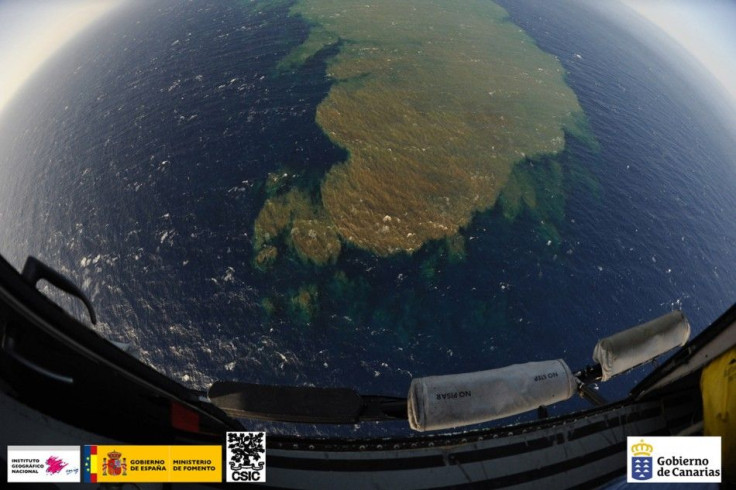Volcanic Eruptions at El Hierro Continue as Sea Stain Grows

The volcanic eruption off the southern coast of the Canary Island of El Hierro appears to be subsiding and the evacuated residents of the southernmost village, La Restinga, were allowed to return to their homes on Sunday.
Since the eruption was confirmed one week ago, the activity has remained submarine, producing an impressive discoloration of the ocean as volcanic gases and tephra are released from underwater vents.
The sea stain has grown to almost half the size of the island itself, according to the latest satellite photos. The green stain is visible on the surface of the sea and in addition to the stains, officials at Spain's Instituto Geografico Nacional (IGN) report a strong smell of sulfur and the presence of dead fish floating on the surface. Scientists said the fish were likely killed by gas escaping from the subsea volcano.
IGN confirms that the large stains come from two fissures on the sea bed, approximately 2,000 - 3,000 feet below the surface. The fissures are located less than 2.3 miles and 1.7 miles from the town of La Restinga. While they remain cautious, the hope is that these eruptions have eased some of the pressure and potential for eruptive activity occurring near the island.
El Hierro, the smallest of the Canaries, has experienced over 10,000 earthquakes since July 19, 2011, a signal that magma is rising toward the Earth's surface. The majority of the earthquake activity shifted from El Golfo in the island's northwest to beneath the Las Calmas Sea in the south earlier this month.
Ramon Ortiz, coordinator of a government science team, said in a statement on Sunday that the emission of sulfur could be the first of four stages of the eruption.
The second stage could see a column of white smoke, the same color as steam, which will then give way to some explosions that are black in color, he stated, noting that the explosions wouldn't put the population at risk.
According to Ortiz, the final stage could be the creation of a small island from which a flow of lava could spread.
Ortiz noted that the possible creation of such an island would depend on the amount of lava expelled.
However Nemesio Perez, scientific coordinator of the Instituto Vulcanologico de Canarias, told EuropaPress that in order for the eruption to form another island next to el Hierro, it would need to have an incredible amount of magma, which he explains so far is not happening.
Photos from the coast of El Hierro show pyroclastic rocks floating in the sea.
Though the alert level was raised to Red Level 1, the government declared the risk to the population on the island to be low, according to the Cabildo de el Hierro on Saturday after a scientific evaluation.
Though the government gave them the green light to return to their homes, many of the 670 residents of La Restinga were still wary of returning.
Residents told the local paper Diario El Hierro, that they were suspicious and don't understand why they were allowed to return right now when the volcano is about to explode.
Several hydrophones were installed in the spring of La Restinga that will allow for better monitoring. Scientists can now listen for new explosions on the seafloor if the eruption continues to head toward land.
The exclusion zone remains and the Spanish government has closed the port at La Restinga due to the volcanic debris. Air traffic is also restricted over the eruption zone.
The volcanic eruption near El Hierro is Spain's first since the 1971 eruption of the Teneguia Volcano on the nearby island of La Palma.
El Hierro, which means iron in Spanish, was designated by UNESCO as a Biosphere Reserve in 2000 with 60 percent of its territory protected. It's currently the most volcanically active of the Canaries and has the largest number of volcanoes, including over 500 open sky cones, another 300 covered by the most recent outflows, and some 70 caves and volcanic galleries.
© Copyright IBTimes 2024. All rights reserved.












